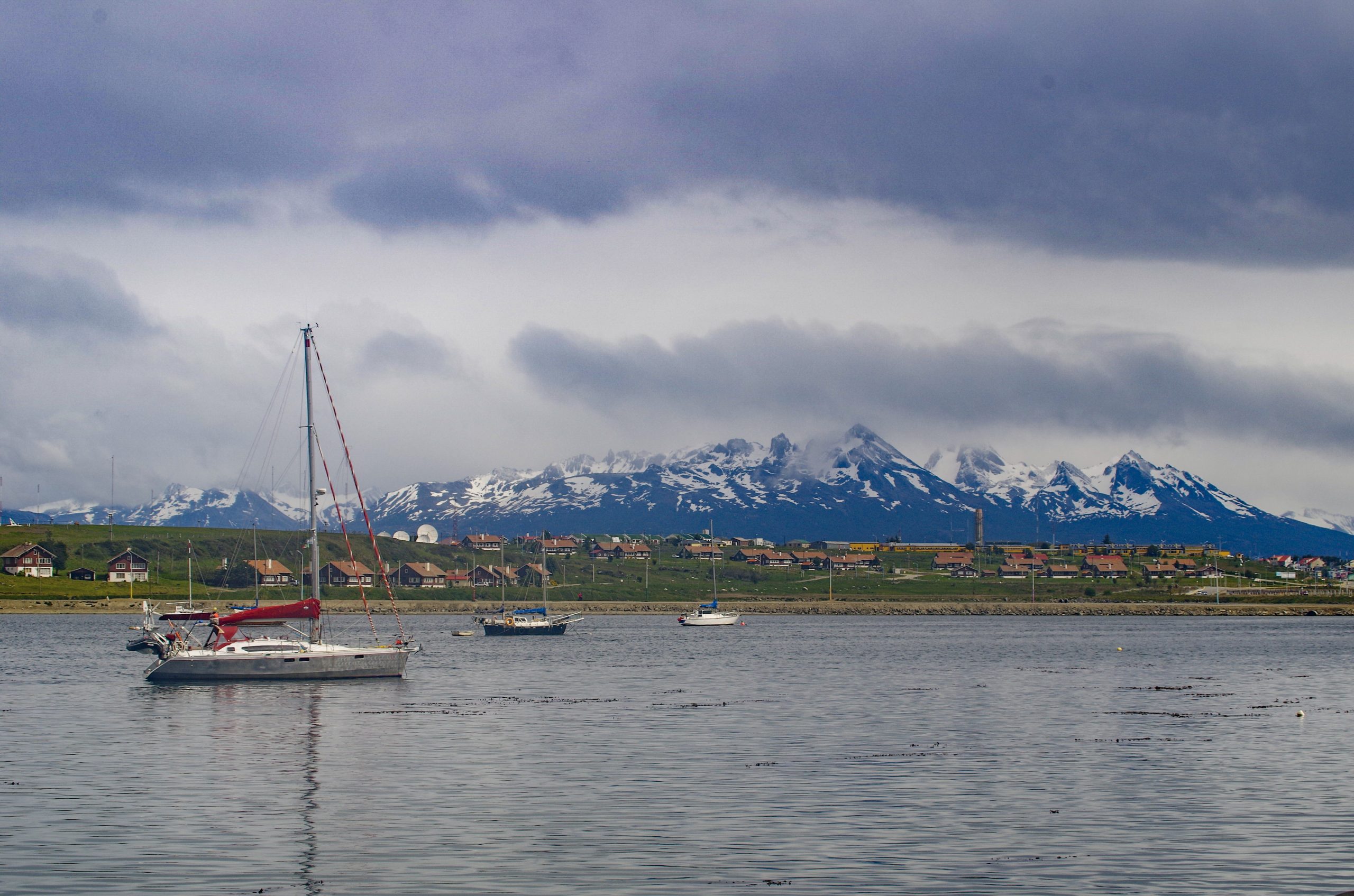Today, Tierra del Fuego — an archipelago of islands that are part of Chilean and Argentinian Patagonia — is still a unique, wild and must-see part of the world.
Two entry options
You can choose two cities of entry, one in Chile and the other in Argentina. We started in Punta Arenas (two words, not one like in Costa Rica), Chile. Punta Arenas considers itself the southernmost city on the South American continent. Larger than you might think, this city of 150,000 people, with an international airport, is the gateway to Torres del Paine National Park to its north, and also the oil fields of Patagonia, and is the supplier to research centers and tourism in Antarctica. Surprisingly Victorian in architecture and cosmopolitan in nature, Punta Arenas features a central park containing a famous, and controversial, sculpture of Magellan.
From Punta Arenas you take a ferry across to Isla Grande de Tierra del Fuego. The 90-minute trip — longer if the ferry is going against the notorious Patagonian winds that we battled while we were there — arrives in the town of Porvenir. Porvenir has an interesting history that starts in the 1880s. That’s when the area was opened by the government of Chile and settled by sheep farmers and gold prospectors, mostly coming from Croatia. The Croatian influence is still strong there today.
The must-see attractions in Porvenir start at the local museum, which exhibits artifacts from the early settlers, including a rebuilt interior of a pulperia. The term pulperia for a small shop in Chile predates its use in Costa Rica, but the word roots and derivation is just as murky. The museum also has a history of the Selkim, the original people on the island when the Europeans arrived. The tale is sad and horrible, as they were systematically eliminated, with even a bounty and hunting of them allowed. By 1980, the genocide left only a handful of indigenous people.
Stromatolites
Outside of town you can visit Laguna de los Cisnes (Swan Lake) — a misnomer since the highly saline lake environment supports mostly flamingos. The protected park here contains stromatolites, the oldest known living organisms and a precursor to modern algae. Fossil stromatolites one billion years old have been found. Live ones are found today only in a few parts of the world — Australia, Canada, Turkey and here in Chile. These living fossils can be seen after a long, cold and windy walk out a boardwalk almost a kilometer long.
On the outskirts of town, near the ferry, is a modern lighthouse on the Chilean end of the Straits of Magellan. On the other side of the Strait, in Argentina, sits another older lighthouse that was the inspiration for Jules Verne’s last novel, “The Lighthouse at the End of the World.” Standing on the edge of the Straits of Magellan is one of those amazing things you never thought would be on your bucket list.
From Porvenir, you drive east towards the border with Argentina, through the barren tundra pampas passing large estancias pockmarked by sheep and the wild-introduced guanacos. The next stop is at the end of Bahia Inutil — Useless Bay. It got its name because it goes nowhere, and was useless for the explorers trying to find the passage across Tierra del Fuego. At the very end is one of the newest protected spaces in Chile, and one of the major reasons for tourists to visit, Reserva Natural del Pingüino Rey.
King penguins
Over a meter tall, king penguins look similar to the even larger emperor penguin, but are more colorful, with their orange and yellow markings. About a decade ago, a small colony of them arrived at the end of the bay and established a permanent colony. About 200 of them live and breed in the bay. As the farthest north colony of king penguins in existence, they have become an attraction for bird lovers from around the world. The reserve has built hides — buildings where you can stand and not be seen or be a distraction to the penguins — where you can watch, photograph and enjoy these amazing birds.
From Bahia Inutil, you can either turn back, or cross the border a few kilometers away into Argentina. This takes you even further south following the edge of the mountainous and glacier-filled Tierra del Fuego National Park, arriving in Ushuaia.
Ushuaia, at 54 degrees south latitude, is considered the southernmost city in the world. (Punta Arenas argues that Ushuaia is on an island, hence Punta Arenas is the southernmost city on the continent of South America.)
Today, Ushuaia is a tourist town of 75,000 and is the gateway for the Beagle Channel out to Antarctica. From mid-November to March it is crowded with tourists on their way to cruises to Antarctica and the surrounding islands. Starting as a British outpost at the time of Darwin’s Beagle voyage, Ushuaia eventually became part of Argentina, who used it for decades as a prison gulag for political prisoners. From Ushuaia, you can travel to the real end of the world at Cape Horn, with a monument and lookouts, then fly out of the Ushuaia international airport back home.
Wild, untamed, starkly beautiful, and full of history and nature, the Patagonian land of Tierra del Fuego should be on your bucket list of places in the world to visit. See related articles:
















